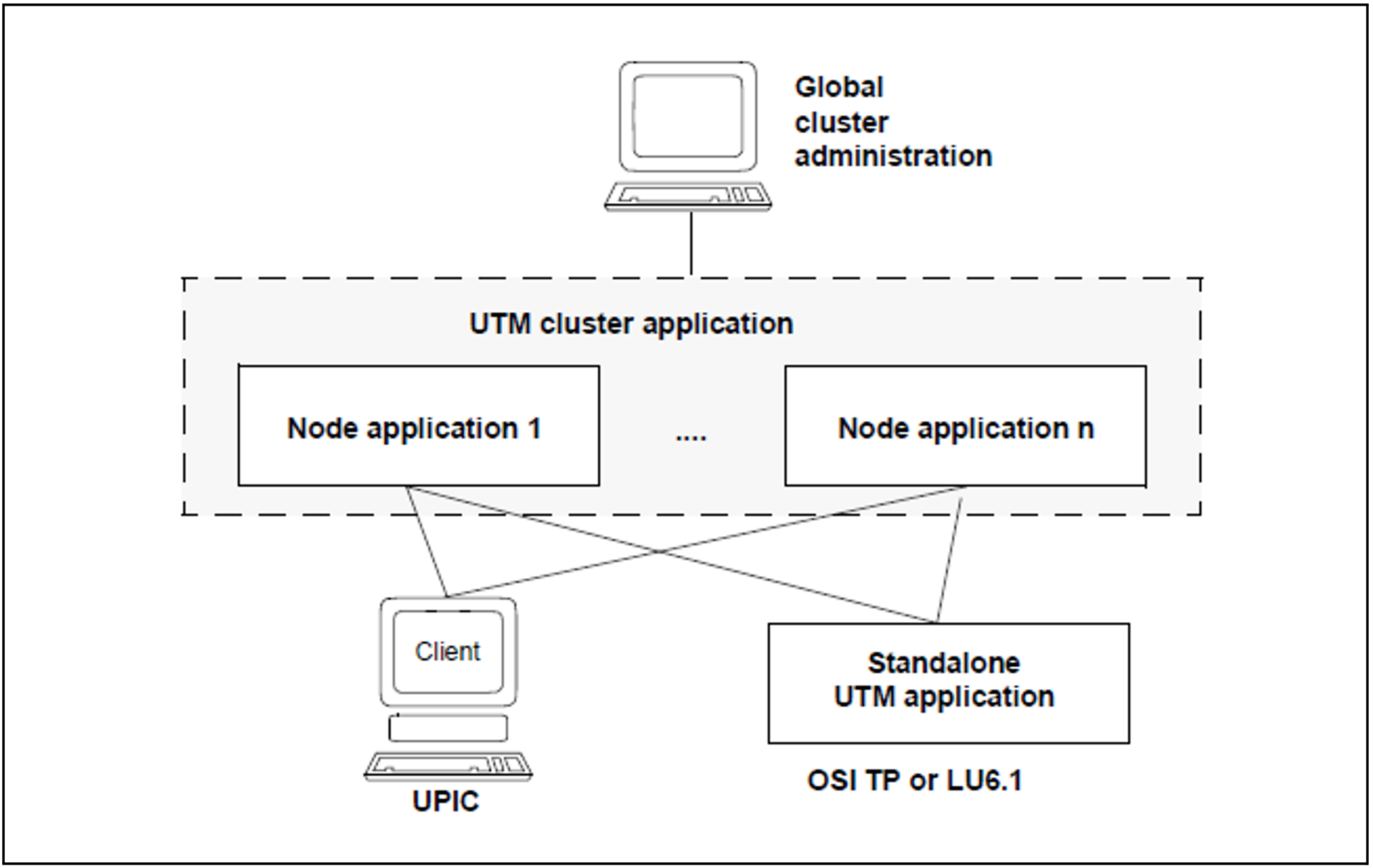Cluster support on Linux, UNIX and Windows Systems is a key function in openUTM.
A cluster is a number of computers (nodes) connected over a fast network and which share common peripherals. A UTM application can run as a UTM cluster application on a cluster.
In the same way as for standalone applications, UTM cluster applications provide you with the full functionality of openUTM.
UTM cluster application
Unlike a standalone UTM application, a UTM cluster application consists of a number of identically configured UTM applications which run on a node of a cluster and can be understood logically to be a single application. Each of these so-called node applications runs on a separate node.
Figure 3: UTM cluster application
On Unix, Linux or Windows Systems UTM cluster applications can be distributed over up to 32 nodes.
UTM cluster applications offer advantages in terms of load distribution and high availability:
Essential high-availability functions such as application monitoring, the online import of application data and online updating of application programs and UTM revision levels guarantee the uninterrupted high availability of UTM cluster applications. If a node application is terminated normally then users can continue open services at any other node application.
For communications between a UTM application and a UTM cluster application, openUTM also provides automated load distribution via LPAP bundles in the case of LU6.1 and OSI TP communication.
For communications between clients and a UTM cluster application, it is possible to distribute the load to the individual node applications by means of an external load distributor. In the case of UPIC communications, openUTM provides a UPIC load distributor for UPIC clients.
Unlike standalone UTM applications, UTM cluster applications permit optimum load distribution with Oracle® RAC.
For more detailed information on the high-availability functions and load distribution in UTM cluster applications, see chapter "High availability and load distribution with UTM cluster applications". |
Administering a UTM cluster application
You can administer UTM cluster applications in the following ways:
via separate administration programs that you create using the administration program interface (KDCADMI),
via the administration command interface,
via the WinAdmin and WebAdmin graphical administration tools (see "Simple, user-friendly application programming" and "Graphical administration with WebAdmin") which also use the administration program interface.
Depending on the administration task, any changes made either only apply locally in the individual node application to which you are logged on or globally in all node applications.
For more detailed information on administering a UTM cluster application via the program interface, see the openUTM manual “Administering Applications”. |
Administering a UTM cluster application via WinAdmin and WebAdmin
WinAdmin and WebAdmin provide you with easy-to-use functions for the administration of UTM cluster applications. Both tools provide both a view that is global to the cluster and a view that is local to the node. WinAdmin permits administrative changes which apply globally to the cluster to be made only within the global cluster context, while administrative changes which apply locally to the node are possible only in the local node context.
WinAdmin and WebAdmin collect the data of all active node applications, collate it and display it in the user interface.
Alongside administrative changes to the node applications, you can also display the statistics data for all the node applications in the UTM cluster application.
It is also very easy to find out about the availability of the node applications.
For more detailed information on administering a UTM cluster application using WinAdmin and WebAdmin, see the associated online help system. |

